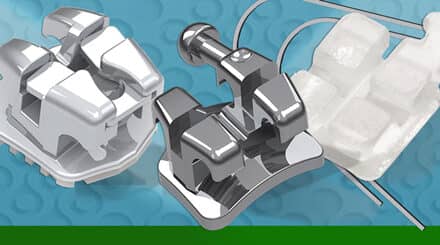by Laurance Jerrold, DDS, JD
Risk-management tips for the clinical staff

Laurance Jerrold, DDS, JD
Most risk-management efforts are directed toward the doctor. The thinking behind this is that if something goes awry, even if an expanded-duty auxiliary rendered the treatment, the doctor, as the employer, will be vicariously liable for the acts of the employee. The practitioner’s “deeper pockets” make him the logical target for risk-management education, and the thinking is that he will then pass on the appropriate risk-management information to his employees.
However, we all remember the child’s game of Telephone, in which the original message gets lost in translation through the various players until, at the end, what is said is not what was initially transmitted. With this in mind, this message is directed at all those who actually have a hands-on clinical relationship with the patient.
What You See Is What You Got
First things first. Since we are talking clinically, let’s start with the records. Having reviewed more than a thousand malpractice cases during my career, I can say that one common thread is both inadequate and poor-quality records, from photographs that are missing or blurry to x-rays that are so unclear as to be of little diagnostic value. If that is the foundation on which a diagnosis and treatment is constructed, can the mechanotherapy and poor outcome be far behind? The first line of defense is adequate clinical records taken pretreatment, midtreatment, and post-treatment.
Stretching the Limits
It is not uncommon for doctors to be unaware of exactly what procedures hygienists and assistants can legally do. This can lead to a scenario in which expanded-duty auxiliaries are performing acts outside of the scope of those authorized by their State Dental Practice Act. This is a major no-no. If there is one easy risk-management tool to employ, it is to review the duties allowable under these statues with everyone at your next staff meeting. Ignorance is not an excuse.
The Patient’s Got a Big Mouth
One of the most dangerous clinical procedures is actually the initial strap-up. Can anyone say that they have never had a bracket slip off a tooth or out of a pair of college pliers and then fall into the patient’s vestibule? Sometimes we are unlucky enough to see that little sucker sitting on the posterior part of the tongue. Most of the time we are able to retrieve it, but not always. When that happens, most of the time it is swallowed, but there is the chance of aspiration—not a good thing.
One easy way to mitigate against this potential horrendenoma is to use a pharyngeal shield. A little 2 x 2 gauze square placed at the top of the oropharynx is a simple risk-management tool that is hardly ever used. It’s cheap, easy, disposable, noninvasive, and has a tremendous potential to avoid even the small risk of this occurrence.
A second but related issue is that there are still practitioners today who, when using a RME, do not have a “safety string” attached to the key. Either a piece of floss tied to the key or a key with a long plastic handle works. It is no fun to be the clinical assistant who has to explain how the patient wound up with the key in their stomach instead of in the little coin envelope or plastic case where it was supposed to be stored. The excuse that the patient moved suddenly, coughed, whatever, will not cut it. The patient is supposed to be under the control of the operator. The risk-management tool is to make sure that a key alone is never used.
Finally, make sure you use a finger rest when fitting and seating bands. Patients have enough holes in their bodies without having their alveolar mucosa or palate punctured. The flat sides and back of the band pusher is the part of the instrument that should be used for fitting and seating, while the tip is used for burnishing.
Stress and Support
As long as we are on the topic of banding, this procedure carries with it the risk of stressing the TMJ unless the mandible is supported from underneath when using that nasty old band pusher. Try to do most of the seating with a band biter—or better yet, a tongue depressor. Using the patient’s orofacial musculature instead of taxing it is a much easier way to accomplish the task.
While we are talking about stress, if you are using mandibular propulsive mechanics, make sure to inquire during the patient’s return visits if there is any discomfort or functional symptoms in or around the TMJ, since all patients respond differently to mechanical intervention involving joints.

“I See,” Said the Blind Man
Ocular injuries are not uncommon in orthodontic practice. If you are using steel ligatures, be sure the patient is wearing protective glasses when you twist the ties.
A number of malpractice suits have also resulted from assistants dripping a little acid on a patient’s face during the etching procedure. Use a gel as opposed to a liquid etch, and never cross the patient’s face with the acid-soaked cotton pledget or bottle of etch.
During debonding, when using hand instruments to remove bonding material from the face of a tooth, remember that little pieces of bonding material or band cement have a tendency to develop wings and fly to unknown parts of the operatory, only to find a landing pad on someone else’s face. It is unfortunate that in many offices, the practice of orthodontics has become a spectator sport, so anyone in the vicinity needs to be wearing protective eyewear.
Finally, for those of you still using extraoral headgear assemblies, make sure that you are using a breakaway system or one with a safety strap.
Hard Versus Soft
It’s the little things that can sometimes get you in the end. Patients who constantly have complaints are more likely to not feel as strong a doctor/patient bond as those who have no problems during treatment. Consider these little clinical tips to help defuse patient animosity.
First, make sure all RME keys have offsets so that they cannot penetrate into the hard palate when they are inserted and turned. Make sure that your Herbst plungers are not too long and that there is no soft-tissue impingement. When you have long spans of wire, such as in a 2 x 4 strap-up, make sure that the unsupported portion of the wire is not digging into either the alveolar mucosa or the cheek, as epuli can develop and, if severe enough, will require surgical repair. Make sure to flatten all unused lingual cleats. Make sure to eradicate all occlusal interferences as enamel fractures (particularly cusp tips in the posterior areas) are often the result.
Ensure that archwires are trimmed close to the end of the buccal tubes, and if you employ cinching, make sure that the cinch is in a neutral vector to the buccal and alveolar mucosa. Be sure to remove all excess bonding material around brackets, and check for gingival encroachment.
Not-So-Great Expectations
Pogo, the famous cartoon possum of the mid-20th century, once said that, “We have met the enemy, and he is us.” Truer words were never spoken. Many cases present with anatomic, functional, aesthetic, and cooperation limitations. You need to pick up on these as soon as possible and discuss them with the patient. Blue skies and rainbows are not the way to present cases to patients who have limitations and can reasonably only hope to achieve an improvement as opposed to a correction.
Letting the patient know from the get-go that some type of compromise is in the offing can often save you from having to deal with a dissatisfied patient after you have beaten them up for a few years.
Reading Comprehension
If you have sent a patient out for a consult or clearance, make sure that you have received a report back and that you have read its recommendations. From a risk-management perspective, it is horrible to have referred a patient for something and then not kept the referral and followed its recommendations.
If a patient needs fluoride supplements, make sure the patient gets the prescription and follows instructions. Not performing an initial perio exam on all adult patients is a definite no-no. Finally, make sure that ALL instances of patient noncompliance are conspicuously noted in the patient’s clinical record.
Progress Reports
You absolutely have to take midtreatment scout films some time toward the latter end of the first year of treatment—unless the patient initially presented with shortened, blunted, or pipette-shaped roots, in which case you need to look for changes every 6 months. Don’t chase after bad teeth with good intentions. If something is going south, make sure the doctor knows and seriously consider discontinuing active treatment. It’s better for the patient to have slightly crooked teeth than none at all.
Along those lines, not seeing the forest from the trees is a common error. If the original treatment plan is not yielding the desired results within a reasonable period of time, seriously consider changing the treatment plan or the mechanics being used. There is nothing more ridiculous than to continue doing the same thing and expect a different result.
Finger-Pointing
One of the big buzzwords today is, “noncompliance mechanics.” Think about that for a moment. When everything is totally under the doctor’s control and the patient no longer has any skin in the game in terms of having to comply with the treatment mechanics, if things go south, the only one to blame is the doctor. Purely from a risk-management perspective, when things don’t work out, I would much prefer to be able to point a finger at someone else, such as the patient or other concurrent treating practitioners.
Take It All Off
When debonding a patient, be sure to follow manufacturers’ instructions. Certain brackets have recommended instruments for bracket removal as well as recommended ways for using those instruments. You have a weak defense when you have deviated from those recommendations. Be sure to document the status of the case upon debonding. Specific attention should be paid to decalcifications, caries, occlusion, and periodontal status.
Take all necessary records to show that this was the status of the case upon finishing treatment so that any post-treatment changes might be able to be attributed to the patient’s lack of compliance with the retention protocol or might be the result of any post-treatment restorative care that the patient receives.
So Shall It Be Written
The final word here is documentation, documentation, documentation. You can never have records that are too complete or comprehensive. If you need photographs or radiographs to document clinical findings, make sure the quality is good and that they remain with the patient’s record. This is your second-best defense against a malpractice claim.
What is your best defense? We’ll save that for another article.
Laurance Jerrold, DDS, JD, is the president of Orthodontic Consulting Group, Jacksonville, Fla. He is a member of Orthodontic Products’ Editorial Advisory Board. He can be reached at





